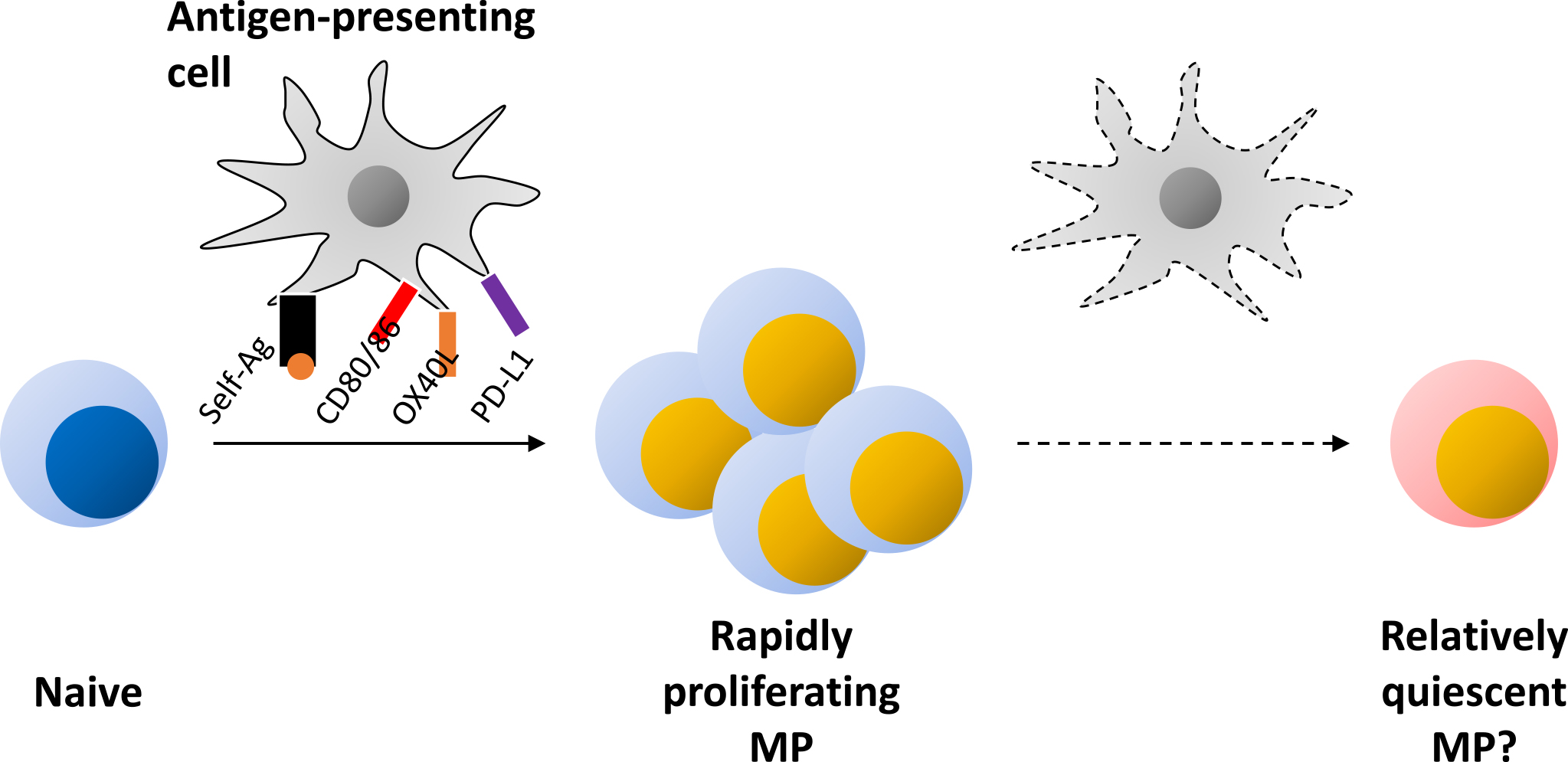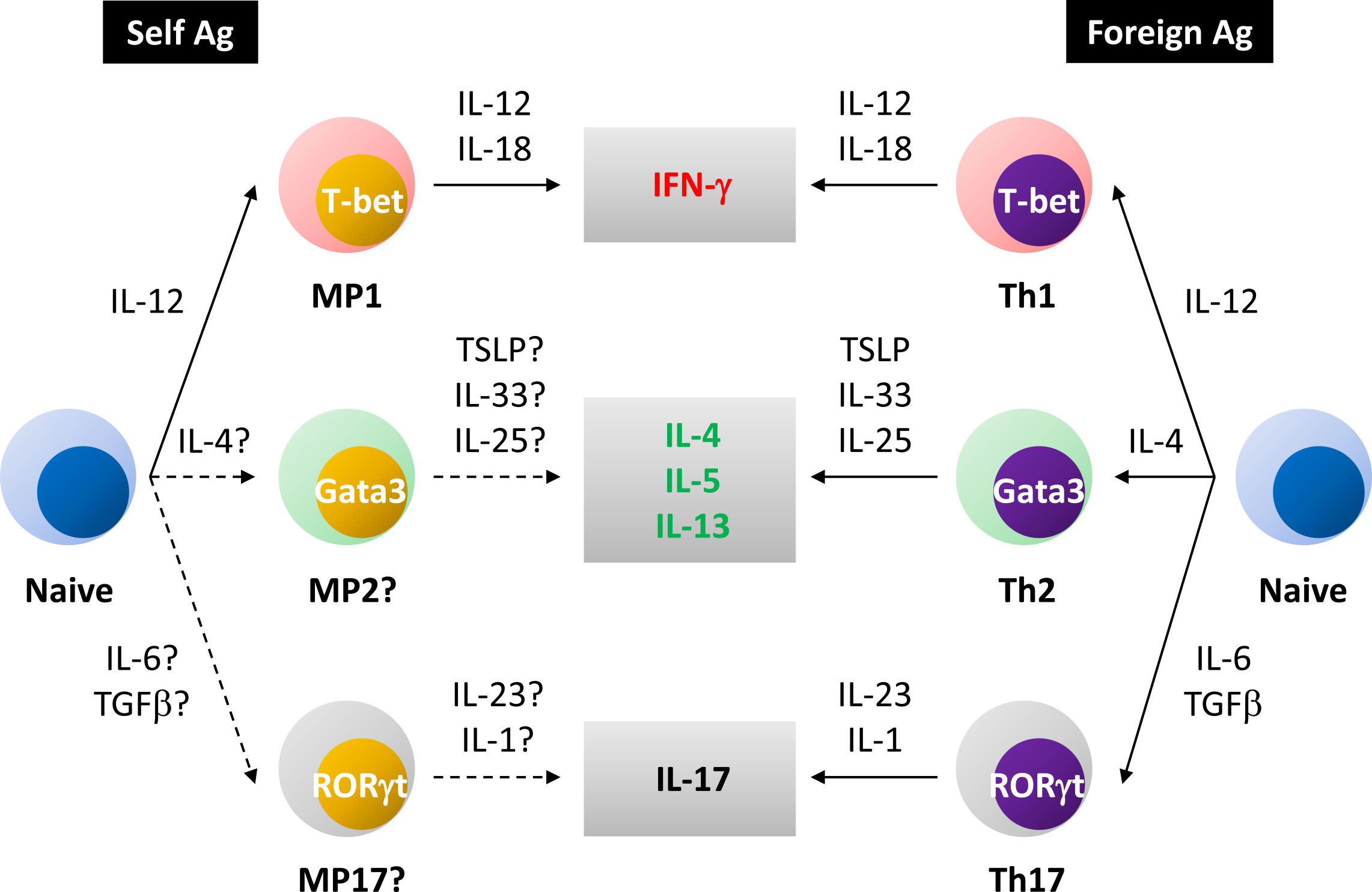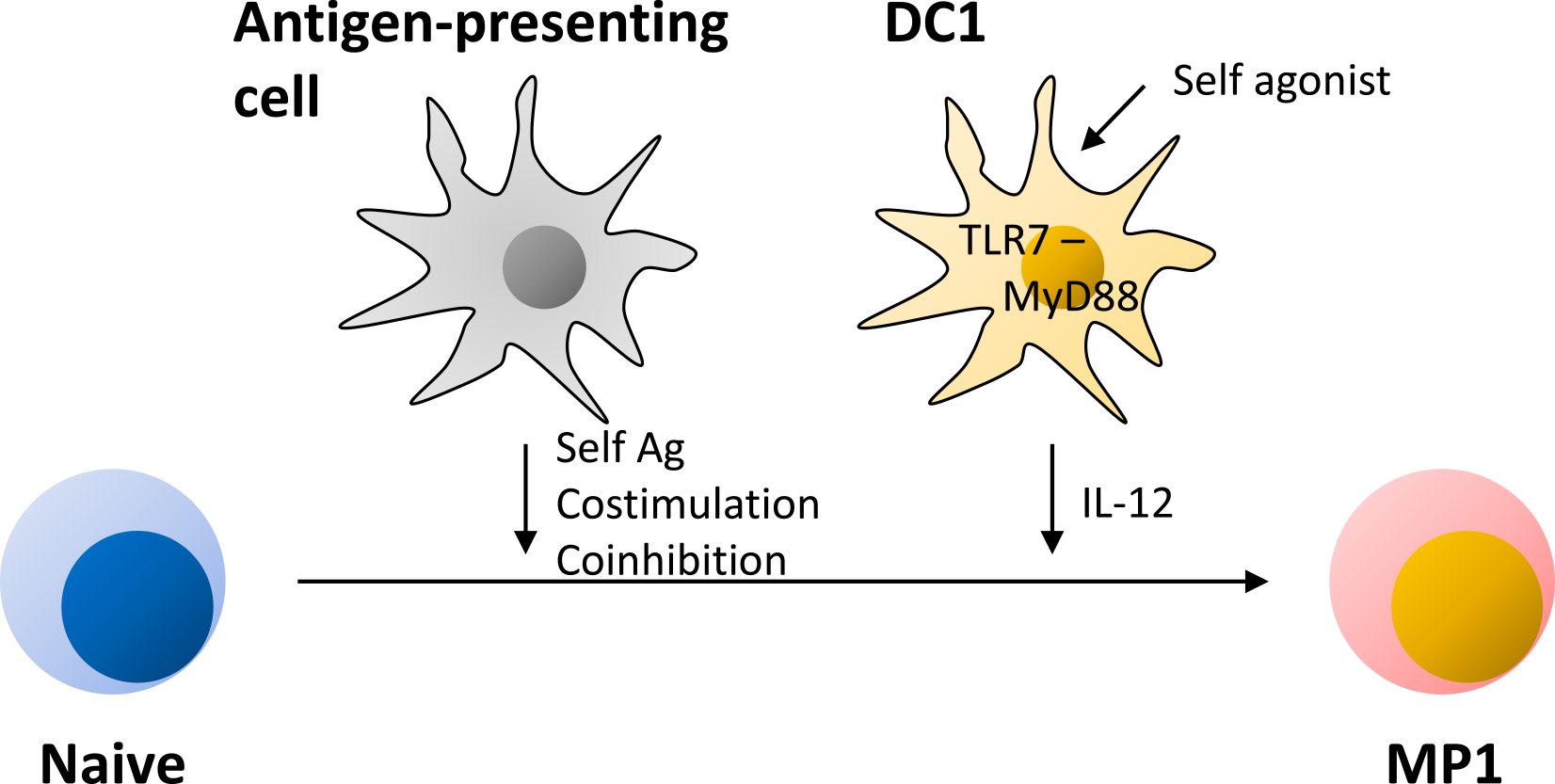Figure 1. Steady state generation and maintenance of MP CD4+ T lymphocytes.
A naïve CD4+ T lymphocyte recognizes both self-Ag/MHC complexes and costimulatory/coinhibitory molecules on antigen-presenting cells to convert to MP cells. Once generated, MP cells become less dependent on TCR signaling while retaining reactivity to costimulation/coinhibition for their tonic proliferation. Some of these rapidly dividing MP cells may gradually cease to proliferate with time.
From: Memory-phenotype CD4+ T Lymphocytes: A Novel Therapeutic Target in Infectious or Autoimmune Diseases?

Figure 2. Homeostatic differentiation of MP cells.
(Right panel) In conventional helper T cell immune responses, a naïve CD4+ T cell specific for a foreign Ag differentiates into Th1, Th2, or Th17 subsets in the influence of the indicated cytokines. These subsets produce different types of effector cytokines. (Left panel) A naïve cell also responds to self-Ag to convert to MP cells. In the presence of IL-12, the latter cells differentiate into T-bet+ MP1 at homeostasis and can produce IFN-γ in response to IL-12 and IL-18 in pathogen infection. Presumptive MP2/17 differentiation pathways are also depicted.
From: Memory-phenotype CD4+ T Lymphocytes: A Novel Therapeutic Target in Infectious or Autoimmune Diseases?

Figure 3. Contribution of different types of antigen-presenting cells to MP1 development.
For MP cell development, antigen-presenting cells including DCs are essential to provide naïve precursors with self-Ag/MHC as well as costimulatory/coinhibitory signals. Additionally, DC1s play an inevitable role in homeostatic MP1 differentiation. This DC subset tonically produces IL-12 in response to some self-derived agonists (unidentified) via TLR7-MyD88 signaling pathway in steady state.
From: Memory-phenotype CD4+ T Lymphocytes: A Novel Therapeutic Target in Infectious or Autoimmune Diseases?



